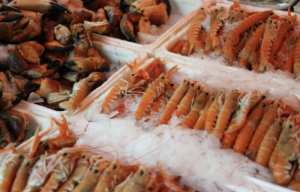New Zealand’s fishing industry stands at a pivotal juncture, grappling with the dual challenges of meeting consumer demand for seafood while ensuring the long-term health of marine ecosystems. In recent years, a paradigm shift has been underway, with the emergence of frozen seafood products as a key player in promoting sustainability within the industry. This transformation not only addresses environmental concerns but also revolutionises the way seafood is harvested, processed, and distributed across the nation.
The Environmental Imperative
 The transition toward frozen seafood is being driven by a pressing environmental imperative, which is at the heart of the shift. Historically, traditional fishing methods have been beset by issues such as overfishing, the destruction of habitat, and bycatch, all of which pose a threat to the delicate balance of marine ecosystems. The stakeholders in the fishing sector in New Zealand have recognised the urgent need for change and have adopted sustainable solutions as a guiding principle.
The transition toward frozen seafood is being driven by a pressing environmental imperative, which is at the heart of the shift. Historically, traditional fishing methods have been beset by issues such as overfishing, the destruction of habitat, and bycatch, all of which pose a threat to the delicate balance of marine ecosystems. The stakeholders in the fishing sector in New Zealand have recognised the urgent need for change and have adopted sustainable solutions as a guiding principle.
Preservation of Freshness and Quality
One of the key advantages of frozen seafood is its ability to preserve freshness and quality over extended periods. Unlike traditional fresh seafood, which often undergoes lengthy transportation processes, frozen seafood can be harvested, processed, and flash-frozen at sea, locking in its nutritional value and taste. This not only reduces food waste but also ensures that consumers have access to high-quality seafood year-round, regardless of seasonal variations in availability.
Reducing Carbon Footprint
Moreover, the adoption of frozen seafood offers significant environmental benefits by reducing the industry’s carbon footprint. By flash-freezing seafood onboard vessels, the need for air transportation is minimised, cutting down on greenhouse gas emissions associated with long-distance shipping. Additionally, frozen seafood eliminates the reliance on refrigerated storage facilities, further reducing energy consumption and mitigating environmental impact.
Sustainable Fishing Practices
Beyond its logistical advantages, frozen seafood products are catalysing a shift towards more sustainable fishing practices. In response to consumer demand for responsibly sourced seafood, fisheries in New Zealand are implementing stringent quotas, habitat protection measures, and fishing gear innovations to minimise ecological harm. By prioritising sustainability, these fisheries are safeguarding the long-term viability of fish stocks and preserving the biodiversity of marine ecosystems.
Empowering Local Communities
The rise of frozen seafood is also empowering local fishing communities across New Zealand. By embracing sustainable practices, small-scale fishers are gaining access to lucrative markets previously dominated by large commercial operations. Furthermore, the direct flash-freezing of seafood at sea enables fishers to capture peak freshness, command premium prices, and enhance the economic viability of their operations. This not only revitalises coastal economies but also fosters a deeper connection between consumers and the source of their seafood.
Innovation in Processing Technology
Central to the success of frozen seafood is the continuous innovation in processing technology. Advances in freezing techniques, such as cryogenic freezing and individually quick freezing (IQF), ensure that seafood retains its texture, flavour, and nutritional integrity throughout the freezing process. Additionally, modern processing facilities equipped with state-of-the-art machinery enable efficient handling and packaging of frozen seafood, meeting the highest quality standards while minimising waste.
Consumer Education and Awareness
However, the transition to frozen seafood necessitates a concerted effort to educate consumers about its benefits. Many consumers still harbour misconceptions about frozen seafood, associating it with inferior quality or diminished taste compared to fresh alternatives. Therefore, raising awareness about the advantages of frozen seafood, including its freshness, convenience, and sustainability, is essential in reshaping consumer perceptions and driving widespread adoption.
Collaborative Partnerships for Change
Realising the full potential of frozen seafood as a sustainable solution requires collaborative partnerships among industry stakeholders, government agencies, and environmental organisations. By working together to develop and implement robust fisheries management policies, promote responsible consumption habits, and invest in research and development, New Zealand can pave the way for a more resilient and equitable fishing industry.
In conclusion, the rise of frozen seafood products represents a transformative force in reshaping New Zealand’s fishing industry towards sustainability. By preserving freshness, reducing environmental impact, promoting sustainable practices, and empowering local communities, frozen seafood offers a path toward a more resilient and ethical seafood supply chain. Through continued innovation, education, and collaboration, New Zealand can harness the potential of frozen seafood to ensure a thriving marine ecosystem for generations to come.